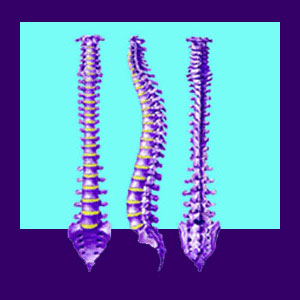
Listhesis is a category of vertebral misalignments and is also a shortened name for spondylolisthesis. This term is almost always used to describe typical forward vertebral slippage in the spinal column, called anterolisthesis, but is sometimes also used to describe rearward vertebral migration, also known as retrolisthesis. Vertebral misalignments are common spinal abnormalities often implicated in causing or contributing to many back ache syndromes.
In most cases, vertebral slippages are mild and due to either congenital irregularities or degenerative arthritic processes which are normal to experience in the spine. However, some vertebral misalignments can be truly symptomatic or even nightmarish, particularly when the degree of slippage is greater than 75%. It is always best for patients affected by vertebral slippage to seek care from a specialist in the condition to achieve the best treatment results.
This narrative discusses some lesser known facts of spondylolisthesis.
What is Listhesis?
This potentially troublesome condition is described as one or more spinal vertebral bodies moving forward (possibly backwards) and out of normal alignment with the rest of the spine. Of course, the vertebrae in the spine are not in a straight line, but instead are staggered in curves in order to better absorb shock and support the weight of the body through a full range of motion. However, the progression of these curves is predictable and when a vertebrae is not in the placement one would expect, vertebral slippage can be diagnosed.
Vertebral misalignment issues can be easily diagnosed using x-rays, although MRI technology will provide a much better idea of any possible problematic nerve involvement issues which may be presented. MRI provides a detailed image of the spine from various angles, helping diagnosticians to fully understand the potential for the abnormal alignment to source symptoms.
Vertebral Misalignment Truths
Spondylolisthesis is almost always experienced in mild degrees and is completely asymptomatic in most of these minor cases. In fact, many of these conditions are diagnosed accidentally during testing for unrelated issues.
Grade 1 is virtually never a worry, while Grade 2 is still quite innocent in many patients. Grade 3, and particularly Grade 4, conditions can be a completely different story, although some patients with very severe vertebral misalignments do not have any symptoms at all. In severe cases, spinal nerves, or the actual spinal cord, may become compressed or crushed in between misaligned vertebrae. In very serious cases, the person may also suffer spinal instability, since the vertebrae do not provide enough support to those around them.
It is crucial to understand that minor cases of vertebral displacement can often act as back pain scapegoats, rather than actual sources of pain and related neurological concerns. This helps explain why treatment for Grade 1 is usually so ineffective, as the therapies are not recognizing or targeting the real source of pain. In these patients, there is likely to be another structural or nonstructural causation yet to be diagnosed, while the spondy is merely coincidental.
Listhesis Thoughts
Of all the common spinal abnormalities studied in exhaustive detail, vertebral misalignment is the only one which has demonstrated a direct correlation to the incidence of causing back pain. This is not to say that all cases cause pain, as statistics do not support this. However, in severe Grade 3 or 4 cases, symptoms are statistically likely to be present and also to correlate with the clinical expectations of the location.
I always advise that patients maintain close contact with a spinal neurologist in order to monitor this condition, even if they are not currently experiencing any symptoms. Spondylolisthesis can degenerate and worsen with time, although this is not always the case. Many misalignments are perfectly stable. Better to be safe, than sorry, so let your doctor keep an eye on the possible progression each year as a precaution.
For those of you with minor spondylolisthesis which has been blamed for causing pain, but has not responded to treatment, I urge to you learn the facts about the condition and understand how this common and generally harmless spinal irregularity has been vilified, mostly for the sake of making money in the medical system.
Remember, many people do not have pain and there may be a great number of other possible explanations for your symptoms, as well. A second or even third opinion may prove beneficial for these patients.





